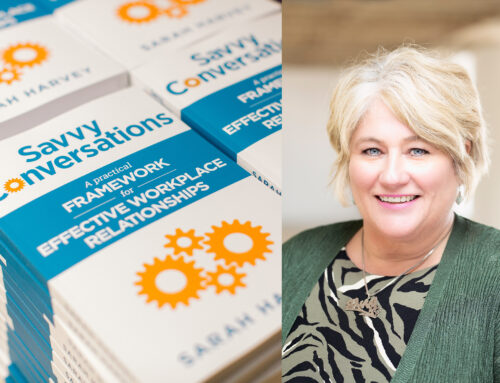
Phil is also a publisher himself — he started his own micro-publishing company after becoming frustrated with traditional publishers. Here, Phil tells us the saga of his published books, and adds to that some wonderful insights into how to make a success of writing and publishing. Thanks, Phil, for bringing your hard-won wisdom to Public Words!
1. Thanks for sharing your insights, Phil — please start by telling us a little about yourself and your interest in the publishing world.
Sure. I spent a decade consulting on enterprise IT projects. By 2008, I had reached a tipping point. I discovered that I was consistently working on poorly run projects that were missing their deadlines, exceeding their budgets, not delivering promised functionality, or all of the above.
So I started writing. I didn’t know if my musings would ultimately become a book. However, I knew that I needed to express myself in some way.
After about 60,000 words, I felt that I had written a pretty good manuscript. Because I had no track record in selling books, I did not pitch my manuscript to traditional publishers. Instead, I chose to work with a subsidy press. In February of 2009, I published the first edition of Why New Systems Fail. Admittedly, the book didn’t look and feel very professional. I created the cover and the index–and it shows. I was envious of my friends’ books that just looked and felt better.
Despite its limitations, the book did reasonably well–until it blew up. In July 2009, Slashdot reviewed the book positively. The next thing I knew, Why New Systems Fail skyrocketed to number 91 on Amazon. (I wish that I still had the screen shot.) I practically broke my finger hitting refresh on the browser. That was a very good day. During that week alone, the book sold more 600 copies.
After that, I had proven that I have the ability to sell books. As a result, traditional publishers began to take notice. Cengage purchased the rights to the revised edition of Why New Systems Fail. Wiley and I struck a deal to publish my second book, The Next Wave of Technologies.
For my third book, The New Small, Wiley and I disagreed on several key elements of the book, but I was determined to publish it anyway. I pitched it to several publishers but didn’t love the offers. As an experiment, I decided to see if i could produce this book with the help of experienced professionals. I also used Kickstarter to raise part of the money required to produce the book properly. Finally, I started a new company, Motion Publishing, creating a separate LLC and brand.
The New Small looks great because, unlike the first version of Why New Systems Fail, I outsourced everything. In fact, some of the same people who worked with me at Cengage. My editor, indexer, and cover designer were all independent contractors. They did a fantastic job.
For my fourth book, The Age of the Platform, I rejected an offer from a “proper” publisher because of the timing. I went back to Motion. I truly believed that the book needed to be released as soon as possible; I was not the only one talking about platforms and Amazon, Apple, Facebook, and Google–i.e., the Gang of Four. The publisher and I had about a one year chasm in our timetables. I launched another Kickstarter campaign and released the book in October of 2011.
It turned out to be a great decision. The book won an award, sold nearly 10,000 copies, and is being translated into Korean. I don’t think that that would have happened if I had accepted the offer from the other publisher.
For my fifth book, Too Big to Ignore, I went back to Wiley for several reasons. First and foremost, we agreed upon the need to release this book as soon as possible. Big Data is very hot right now, and many books are in the process of being published. Big Data is, in fact, becoming too big to ignore. If Wiley waited a year to publish the book, it would be very difficult for the book to sell many copies. It would be tantamount to releasing a social media book today. Right now, that market is completely saturated. Finally, Wiley agreed to make this part of the SAS series. Getting a book into an established franchise is huge .
At present, I am at work on my sixth book, The Visual Organization: How Intelligent Companies Use Data Visualization To Make Better Decisions. Again, I am working with Wiley and the book will be released in early 2014.
By bobbing in and out of traditional publishing, I am one of a growing breed of “hybrid authors,” something I blog about here.
2. What’s micropublishing?
It’s important to distinguish micropublishing from self-publishing. That is, all self-publishing is not created equal. There are degrees. If I showed you the self-published version of Why New Systems Fail and Motion’s The New Small, you would immediately see and feel a difference.
Micropublishers can move fast and stay flexible. They can take on only the projects that make sense. In a very real way, they are not full-time operations. In my case, Motion is a bit of a side project. I focus most of my time on my own writing, speaking, and consulting. Motion has released three additional books beyond my two. Two came from companies and one came from a first-time author who knew that he would have a hard time procuring a deal from a traditional publisher. When a Motion is not in process, the company is effectively on hiatus. It ramps up as necessary.
3. Why should our readers consider it a viable option, as opposed to traditional publishing?
Micropublishing to me represents a viable third alternative for authors. Yes, would-be and existing authors can chase traditional publishers. However, as I’ve experienced myself, it is very difficult to get a proper book deal unless you have already shown an established ability to sell books. As for subsidy presses like AuthorHouse and Lulu, generally speaking, I have found those books to be fairly poor quality.
Now, a bit on the economics. Traditional publishers pick a lucky few and typically pay small advances. Books look professional, but authors don’t have much control and they don’t own their work once the book is released.
Micropublishers are different in some key ways. For instance, under the Motion model, authors pay my team and me to have their books published. (Again, traditional publishers typically offer small advances.) Motion provides a service and, after the book is published, Motion collects no additional royalties. Finally, the author retains all intellectual property rights. Again, this is very different than the traditional publishing model.
So, what’s the upside? Yes, authors incur costs, but they can reap potentially greater rewards if the book recoups its costs. The books also look great because Motion is not a chop shop or an assembly line. My team works very quickly and completes books in a fraction of the time that traditional publishers typically can. I’ll put Motion’s work up against anyone’s. I am only the company founder; I am not the talent.
Finally, texts from micro-publishers don’t suffer from the stigma that still plagues many self-published books, although that’s eroding.
4. How do you make a book successful when there are, by some estimates, a million books published every year in the USA alone?
You are right. There is no guarantee for success. I like to distinguish between necessary and sufficient conditions. To clarify, producing a low-quality book for $1,000 practically guarantees that it won’t do very well. However, if an author spends — according to one estimate — $12,000 or $20,000 on the production of the book and even more for marketing, there is a greater chance that the book will do well. There is no guarantee.
To borrow a line from Nate Silver, we need to think probabilistically. I never guarantee that a book will sell a certain number of copies. Luck is a huge factor; don’t let any PR firm or literary agent tell you otherwise.
Beyond a healthy dose of luck and becoming a reality TV star, I can offer three key pieces of advice. First-time authors often make these mistakes. For one, invest in a solid and compelling cover. Don’t skimp on that expense. Whether it’s in a book store or online, it doesn’t matter. There is so much content out there today, people need to be drawn in. A cover is the best way to do it.
Second, make sure to use a professional editor. People think that they can edit themselves. They’re wrong. A professional editor is invaluable. If someone happens to find and read your book, you don’t want it to come across as unprofessional. Typos, inconsistent syntax, grammatical errors, and the like make people less likely to read your book, much less recommend it to others.
Finally, do not design the book in Microsoft Word. It will just looks amateurish. Professional design programs like Adobe InDesign are incredibly powerful. You want your book to look and feel real, not like it was bound at Fedex/Kinko’s.
5. What’s a platform and why should beginning authors think about it?
There are many definitions of the term platform, and it really has become a buzzword. In The Age of the Platform, I define it as a series of planks buoyed by a vibrant ecosystem. Amazon, Apple, Facebook, Google, Twitter, and others have embraced platform thinking as their business model.
In the context of an author’s platform, it’s a bit different. To me, a platform represents the sum total of the author’s on- and offline presences. Does the author maintain a website? Blog frequently? Appear on radio or TV? Write for other high-profile media outlets? Engage in conversations on social networks? Speak at events? Run seminars? Attend book clubs?
The stronger the answers to those questions, the better the author’s platform.
Regardless of how an author publishes his or her book, a platform has become imperative. If I can’t find you on Google, how do you expect to sell books? Yes, occasionally things go viral, but that represents the exception, not the rule.
6. What’s the first step a would-be author should take to get published?
It depends on the type of book that the author is writing. For instance, when writing a non-fiction book, it is important to be able to answer the two following questions.
- Who is going to buy that book?
- What are they going to do with that information?
For someone writing a fiction book, you have to ask yourself if you have built a tribe, to use Seth Godin’s term. Many authors make the mistake of simply writing the book and not worrying about the marketing. In point of fact, authors need to worry about marketing long before they’ve written the first word. Many don’t, and as a result most self-published books only sell 75 copies.
Regardless of the type of book that the author is writing, if behooves him or her to build the strongest possible platform, and as early as possible. Understand going in that the odds of becoming the next Amanda Hocking are very remote. Write because you enjoy it, not because there is gold at the end of the rainbow.
Ask yourself about your timeline, your budget, and your ultimate objectives with the book. Realize that the odds may be stacked against you, but there’s something to be said for publishing a book, even if it does not do terribly. Hope of the best but prepare for the worst. (I wouldn’t sell my house to publish a book.)
Finally, realize that, like anything in life, you get what you pay for. Some people balk at micropublisher prices. When prospective clients tell me that they can get their entire book published for $700, I tell them that I pay my amazing cover guy more than that.
7. Thanks, Phil! Keep in touch and let us know how book #6 comes out.











Great article Phil, but even greater accomplishments! Good job and best wishes for your continuing success!